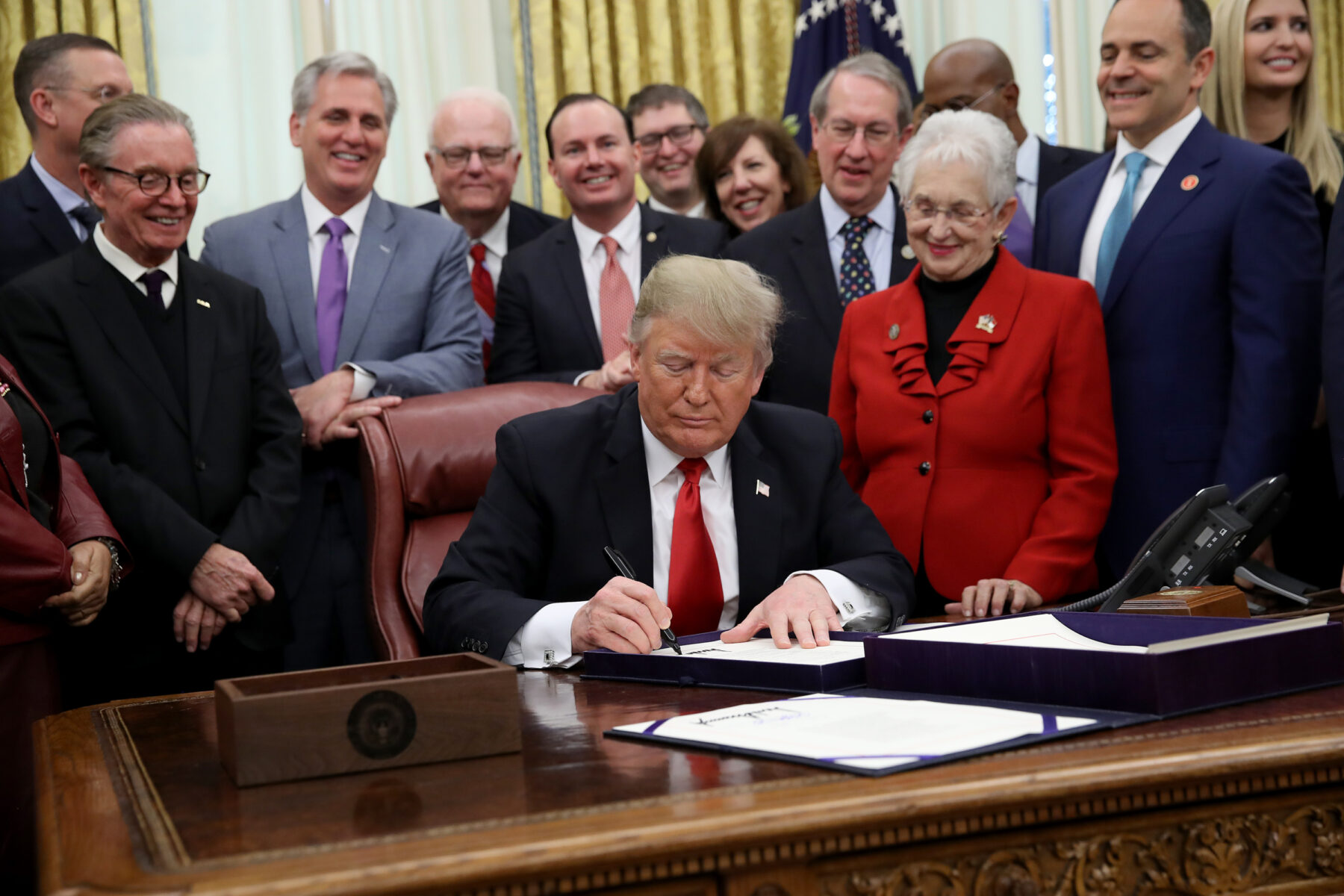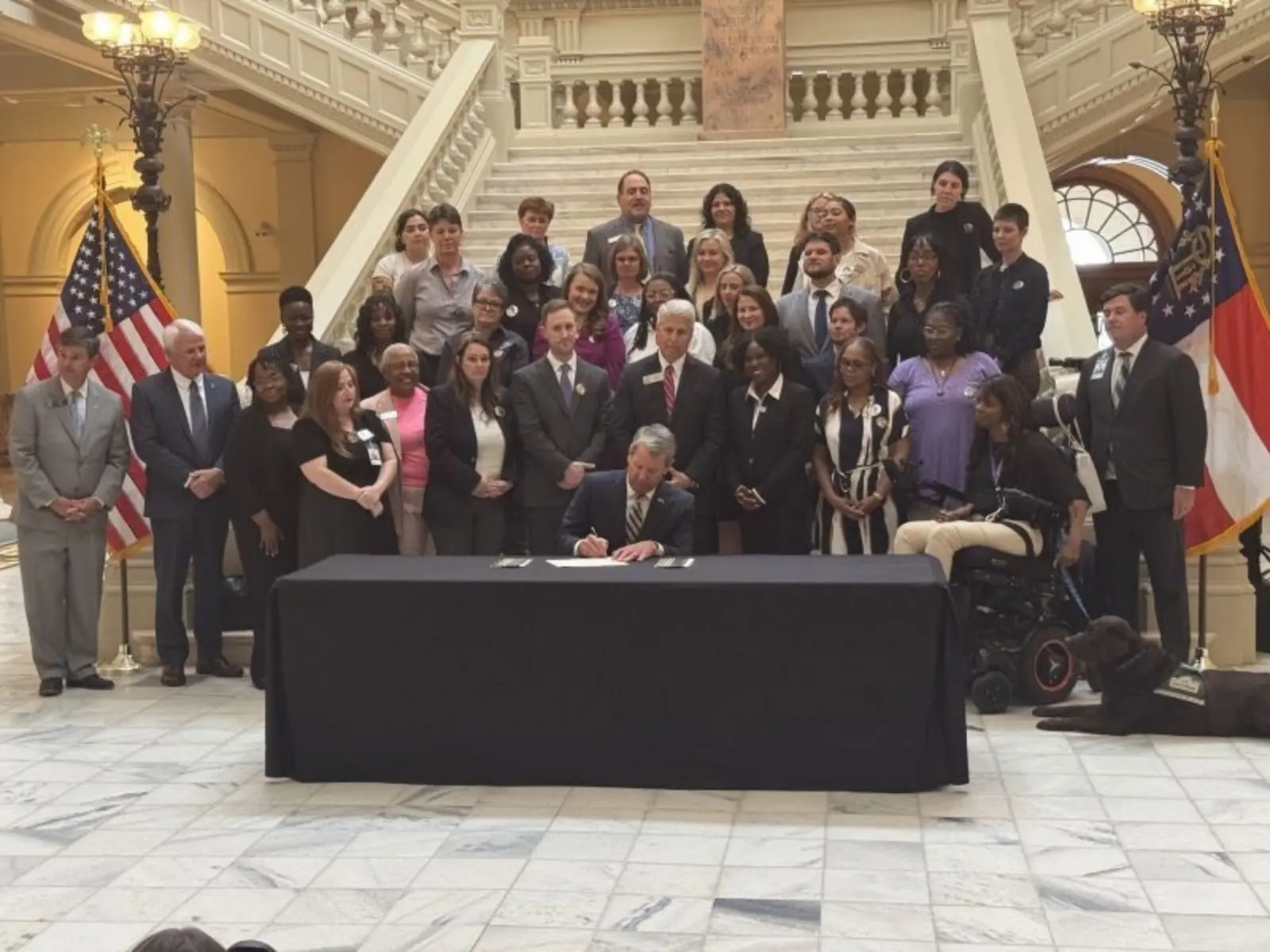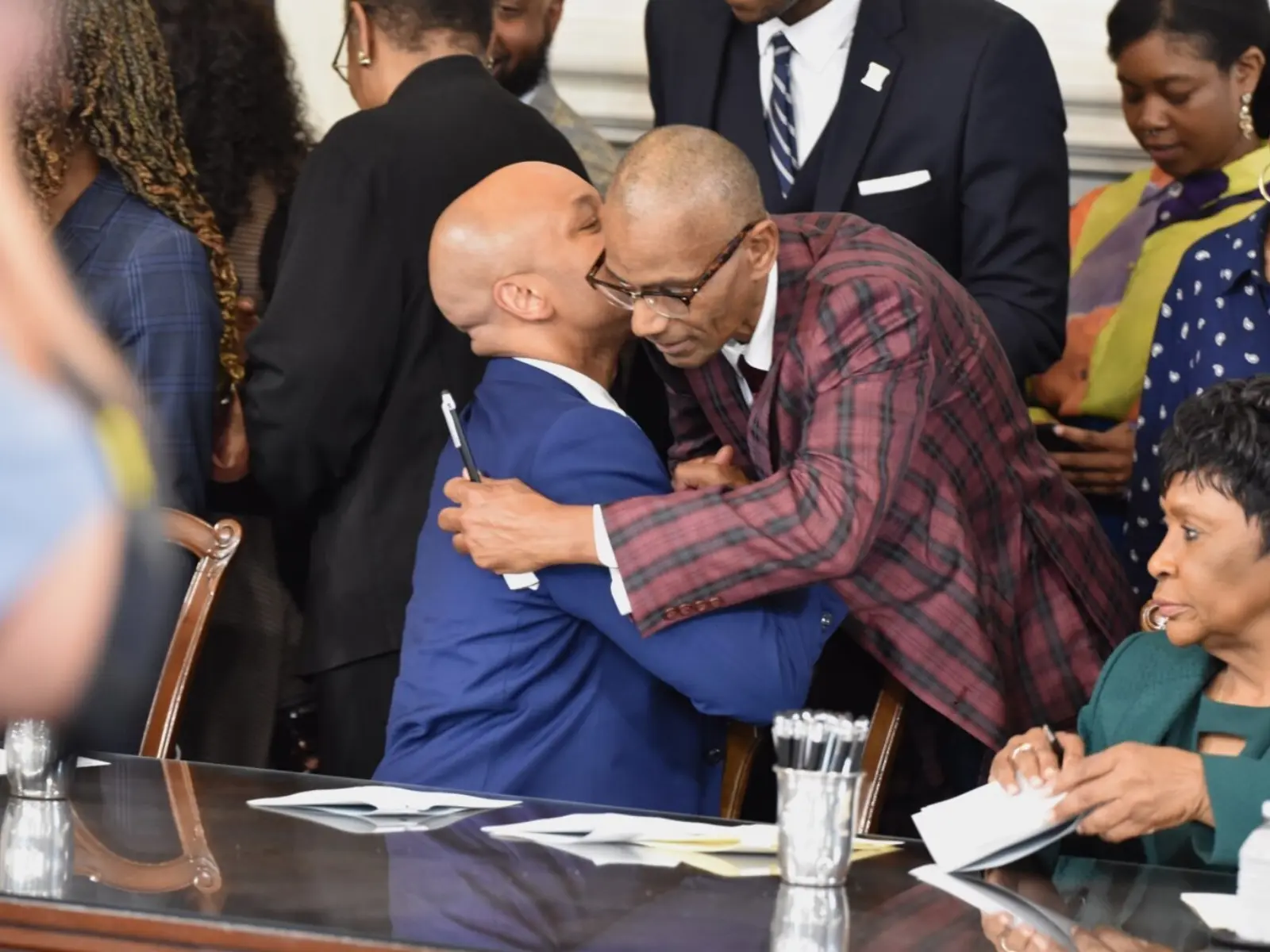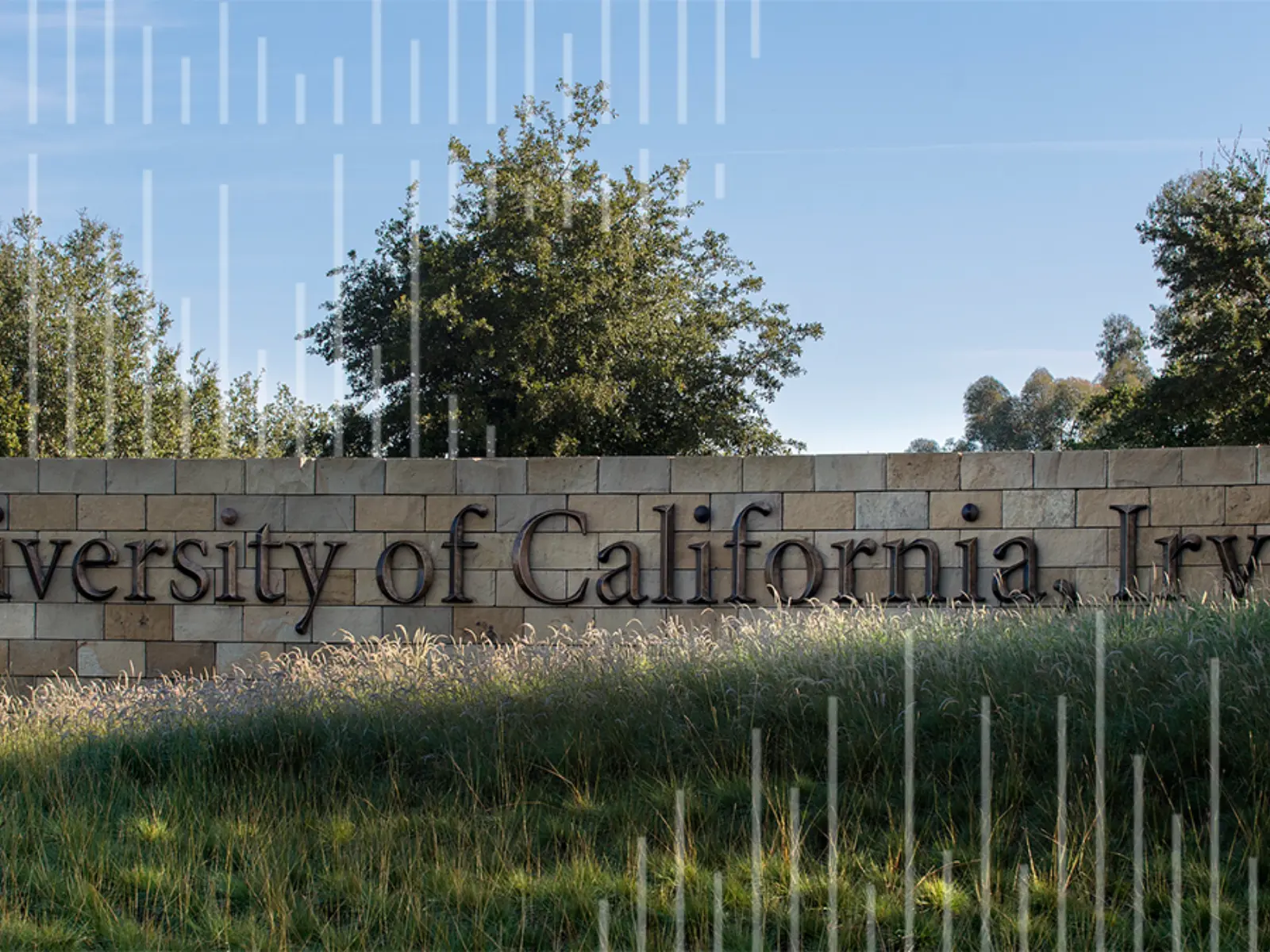Five years ago, in 2018, then President Donald Trump signed the bipartisan First Step Act into law, finalizing one of the most significant changes to federal sentencing and corrections policy since the 1970s.
Recognizing the social and personal toll from decades of rising jail and prison populations, the bill sought to stem the tide of mass incarceration in America. “Criminal justice reform was no longer a niche cause, but one that responded to a nationally recognized social problem with a movement that had itself gone national — with all the internal divisions we might expect,” writes Colleen P. Eren in a new book, Reform Nation: The First Step Act and the Movement to End Mass Incarceration.
The First Step Act represented compromise, not revolutionary reform, explains Eren, an associate professor of sociology and criminal justice at William Paterson University. But it had lasting impacts. Through dozens of in-depth interviews with advocates, philanthropists, law enforcement representatives, formerly incarcerated people, and celebrity supporters, the book tracks the 20-year shift in attitudes and ideas that brought the political right, left, and center together in a sometimes uneasy coalition to advance policy that offers justice-involved people second chances and increases racial equity.
“Eren does a great job of detailing how the criminal justice reform movement came together and led to passage of the First Step Act,” says Kevin Ring, vice president of criminal justice advocacy at Arnold Ventures and former president of Families Against Mandatory Minimums (FAMM), who was interviewed for the book. “She also had the benefit of seeing what has happened over the past few years with the crime spike and reaction to it. Things have changed, and those of us committed to reform need to meet the moment and keep the winning coalition together.”
At a moment when the political appetite for reform may have weakened on some issues, this lucid account provides a roadmap not only to the strategies that have worked in the past but also to where the reform movement must go in the years to come. We sat down with Eren to discuss the significance of the First Step Act and the state of criminal justice reform today.
This conversation has been edited for clarity.

Arnold Ventures
At a personal level, what brought you to criminal justice reform?

Colleen Eren
When I was 16 years old, I heard Sister Helen Prejean speak about her chaplaincy for people on death row. I don’t think many teenagers think about redemption for people who have committed homicide, but it moved me greatly. And so, in the early 2000s, prior to my work in academia, I was director of organizing for New Yorkers Against the Death Penalty, motivated by the belief that even people who have done the most egregious things deserve a second chance to live meaningfully.

Arnold Ventures
In the book, you open by writing about what sociologist Arlie Hochschild calls the “mental itch” to pursue an area of study. What brought you to study the moment of the First Step Act’s passage?

Colleen Eren
When I was working in organizing around ending the death penalty, I was personally interested in tracking the movement and seeing the way that coalitions work together. Then, as a researcher, I became fascinated by the First Step Act. Who would have thought that any kind of criminal justice reform would pass under President Trump? It was this time of intense political polarization and most reformers thought it was the death knell for reform. So this particularly powerful, symbolic victory raised all kinds of interesting questions for me.

Arnold Ventures
How did criminal justice reform become a popular movement — one that many advocates, funders, and even celebrities wanted to be involved with?

Colleen Eren
The turning point came near the start of the millennium. Prior to that, most NGOs were working on discrete issues at a local level. The death penalty movement, for example, was siloed away from the women’s prison movement. But around 2000, you began to see a national movement infrastructure coalesce. Large organizations like the ACLU, NAACP, and American Conservative Union all created national criminal justice focuses. State organizations like Californians for Safety and Justice became the Alliance for Safety and Justice and went national. You also saw a proliferation of new organizations with a national scope. Right on Crime, one of the biggest movers and shakers in this space on the political right, formed in 2007. What made it something that celebrities want to be involved in was the racial justice component. You had Michelle Alexander’s book The New Jim Crow and Ava DuVernay’s film Thirteenth creating this feeling that ending mass incarceration was the civil rights movement of our time. Finally, another reason it became mainstream is that because of decades of mass incarceration so many people were impacted by the justice system or knew someone who was.

Arnold Ventures
Based on your research, what were the keys to achieving the reforms in the First Step Act, especially with such a broad ideological coalition to navigate?

Colleen Eren
The socio-historical moment was very important. You had sustained drops in both property crime and violent crime. By 2018, when the First Step Act was passed, the crime rate was literally half what it had been in 1992. Crime wasn’t this hot-button issue with voters, so reform wasn’t political kryptonite. And you had this metastasizing problem of over-incarceration, where one in three people had a criminal justice record by age 23. The reforms of the First Step Act were designed to engage a broad coalition and satisfy organizations as ideologically diverse as the Fraternal Order of Police and the ACLU. Politically well-connected philanthropists also got behind it. Directly impacted people told their stories. Importantly, the appeals were made based on complementarity. When the right was talking to the right, they used narratives of the right — second chances, getting people back to work, and keeping families together. The left used language of the left — racial justice, ending mass incarceration, and slavery at its origins. The fact that those narratives could exist in tension with each other without fracturing the coalition helped ensure the bill’s success.

Arnold Ventures
What kinds of compromises did the First Step Act require in order to be passed?

Colleen Eren
The First Step Act is an example of people not letting the perfect be the enemy of the good. There were differences to negotiate between conservative reformists and progressive reformists. Conservatives think that the incarceration system went too far but that it’s not fundamentally flawed. They aimed for moderate, incremental reforms that didn’t explicitly use racial justice language. Left-leaning organizations refused to give their support until sentencing reform was included, which was significant. The First Step Act made major inroads in curbing some excesses of federal mandatory minimums. That was one compromise right-wing politicians had to make. The left had to accept the PATTERN risk assessment — a tool that assesses the likelihood that someone who is released from prison will reoffend. They said it was racist, reinforced existing disparities, and didn’t go far enough toward ending mass incarceration. It was a classic reform-versus-revolution tension.

Arnold Ventures
What are the most significant outcomes from the bill?

Colleen Eren
Thirty-thousand people have been released from federal prison so far under the First Step Act, according to FAMM. The recidivism rate for those people is 12.4% compared to a rate of around 43% for others exiting federal prison. The First Step Act made President Obama’s Fair Sentencing Act of 2010 retroactive, resulting in the release of around 4,000 people who were sitting in prison under the 1987 crack cocaine sentencing disparity. It also made it easier to get compassionate release, and a total of 4,500 people have been released under that change. There’s been a 35% increase in rehabilitative programming because of incentives to work with people in prison. While federal criminal justice legislation like the First Step Act is not the most immediately impactful, because mass incarceration largely takes place at the state level, it sets an important tone for the states.

Arnold Ventures
What did you learn about how philanthropy, business, and corporations supported the movement?

Colleen Eren
The movement’s attraction of philanthropic dollars coincides with this philanthro-capitalist ethos that began in the 1990s. Here’s this big problem — the broken criminal justice system. It’s ineffective, bloated, and causes harm to communities. The issue attracted problem-solvers like the Arnolds, Dan Loeb of Third Point, and Mike Novogratz of Galaxy. Since 2000, there’s been a truly unprecedented influx of dollars into this space. Galaxy estimated that around $600 million was given by institutional donors in 2021 alone. These philanthropists have been involved in a few ways. One is by supporting one-off cases and policies. For instance, Dan Loeb intervened in the Bernard Noble case to help him get out of prison. The second is by developing research, policy, and advocacy. When big foundations identify a priority — let’s say bail reform — it shifts the entire field. They’re also influencing approaches because of the methods they take, like Arnold Ventures’ emphasis on evidence and data.

Arnold Ventures
Can we expect that kind of support to be sustained?

Colleen Eren
I think that big philanthropic organizations that have already committed to criminal justice reform will continue to do so. However, something that kept being raised in my interviews was the “shiny object” phenomenon. Criminal justice reform is losing a bit of its shine now. A lot of grantees are very concerned about whether support will continue, and the evolution of the movement is highly contingent upon the socio-historical moment.

Arnold Ventures
As you suggest, criminal justice reform may be less popular at the moment. What has made things more difficult for the movement?

Colleen Eren
When I was finishing my interviews for the book, it was summer 2020, right around the murder of George Floyd. There was a sense of nationwide support for the idea that the police had racial bias. We were about to see a bloodbath in prisons because people who were incarcerated couldn’t socially distance and COVID-19 was running rampant. A lot of the folks I spoke to thought criminal justice reform would only accelerate. Instead, there was backlash, because even though crime has remained well below its 1992 level, we saw a dramatic rise in homicide across the country, scenes of civil unrest and disorder, and the turn of phrase “defund the police.” Suddenly the law-and-order rhetoric started resurfacing in response not only to the uptick in homicide but also what was perceived as an extreme anti-police position.

Arnold Ventures
What can reform advocates today learn from the coalition that worked together to pass the First Step Act?

Colleen Eren
One lesson is that political windows of opportunity are narrow and short-lived, especially in criminal justice reform. When you have a window of opportunity, that’s very important. Another is that it’s important to build support from institutional actors, like business, law enforcement, and philanthropy, and then do truly trans-partisan work to make the coalition as broad as possible. Differences can be productive points of friction rather than fissures. Start with common ground rather than with the most extreme asks that end up alienating the American public in the process. If we want to continue momentum on criminal justice reform, it has to have roots that go deeper than the institutional actors. It has to be a mass movement, driven by the public.




















